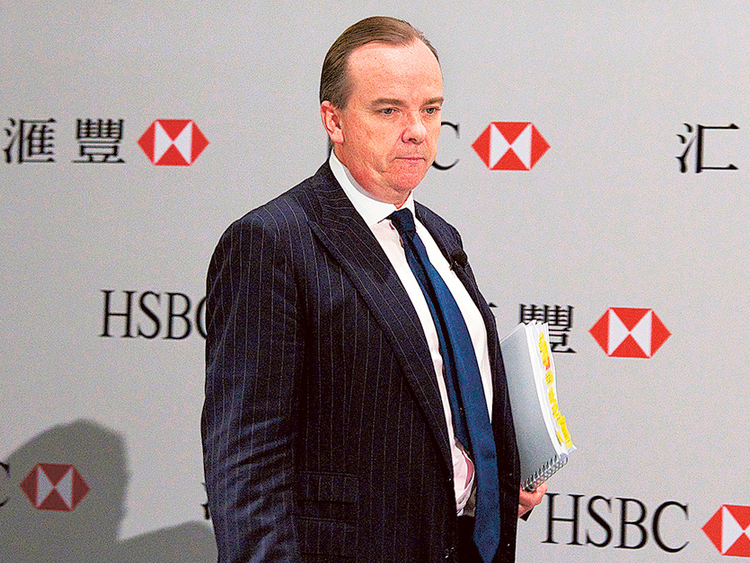
Hong Kong: HSBC Holdings expects China to continue to allow the yuan to weaken against the US dollar, Chief Executive Stuart Gulliver said on Thursday.
China’s currency has weakened sharply against the US dollar since late 2015 as outflows have increased on concerns about slower growth.
Gulliver was speaking at an event organised by the British lender to discuss globalisation of the Chinese currency.
He said China was in the middle of a difficult transition from an exchange rate regime that is highly managed to one with greater flexibility. But he said China’s move to change forex mechanism was not an attempt to devalue the yuan to support its exports but an important part of its reform process.
“We expect mainland authorities to continue allowing dollar/yuan exchange rate to adjust higher,” which will help develop two-way expectations of the exchange rate, Gulliver said.
Despite an unexpected devaluation in August last year, the yuan remains at record highs against a trade weighted basket of currencies, Thomson Reuters data showed. It is also the most overvalued against its historical averages, according to various surveys.
HSBC, which has the biggest deposits of yuan among foreign banks, is setting up a majority securities joint venture in China, to take advantage of the mainland rules that favour Hong Kong-established banks over foreign peers in the world’s No.
economy.
In the same forum, Norman Chan, Chief Executive at the Hong Kong Monetary Authority said the city’s de facto central bank is aiming to set up a platform this summer to help Hong Kong pursue opportunities from China’s “one belt one road” initiative.
The initiative envisions building a network of land, sea and air routes that will open new trade links and markets for Chinese firms as the domestic economy slows.
Banks to close 400 UK branches this year
Three of Britain’s largest banks are planning to close about 400 branches this year, according to people familiar with the situation, a new programme of closures that could leave thousands of customers without easy access to a bank. The number of branches operated by the major banking groups in the UK has halved in the last 20 years and following political pressure a new rule was set last year that requires banks to assess the impact on local communities of a branch closure. HSBC may close the highest number with about 200 branches set to go this year, the people said. That is about a fifth of the bank’s UK branches and a third more than it closed last year. Royal Bank of Scotland and Barclays are also planning to close about 100 branches each, the people said.
“The bank closures will accelerate the death of the British high street,” said Derek French, director of the Campaign for Community Banking. “This will particularly have a knock on impact on local businesses and the elderly.” HSBC, RBS and Barclays said in separate statements they were reducing their branch networks as customers visit less frequently in favour of banking online or via mobile.













